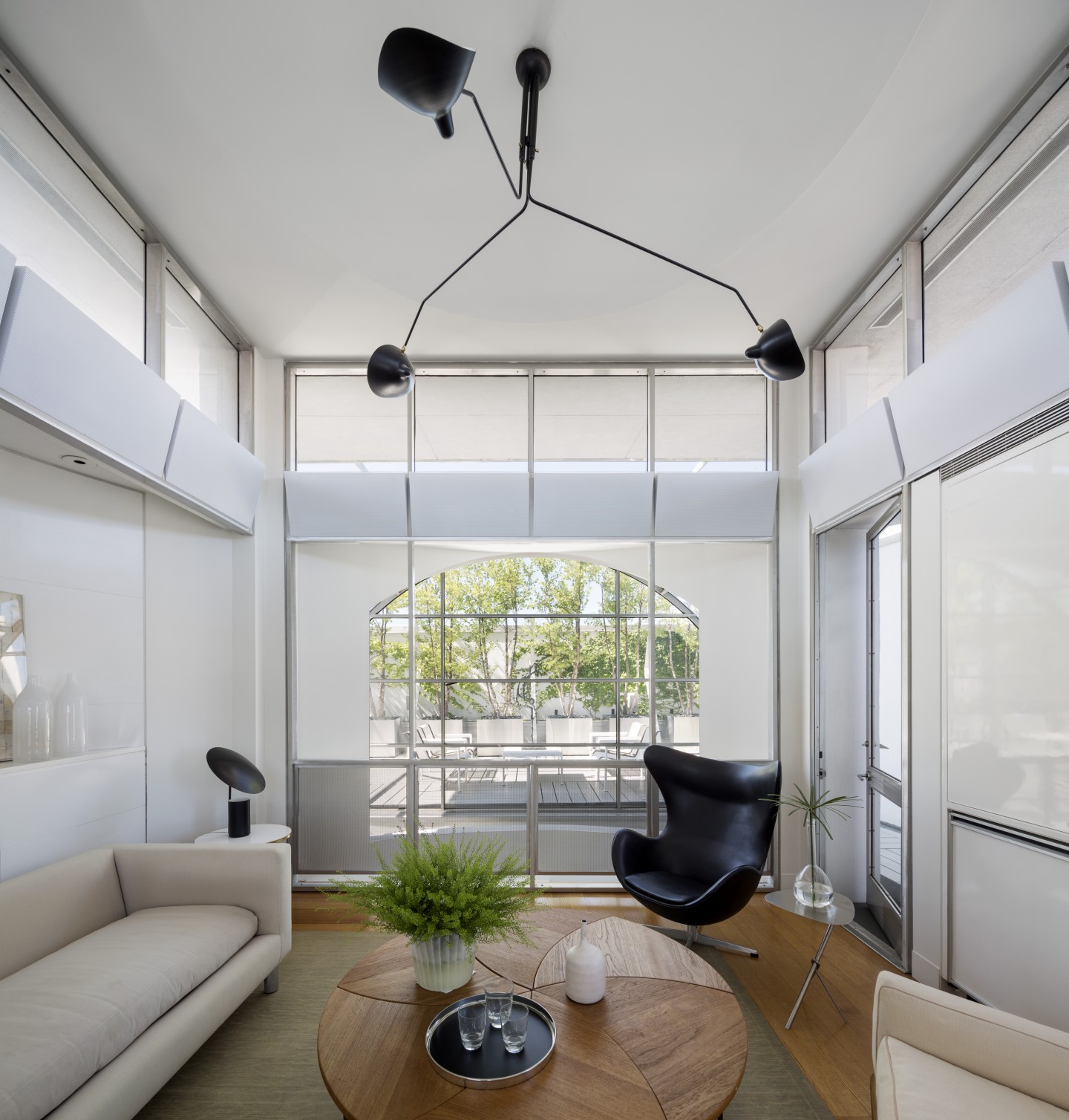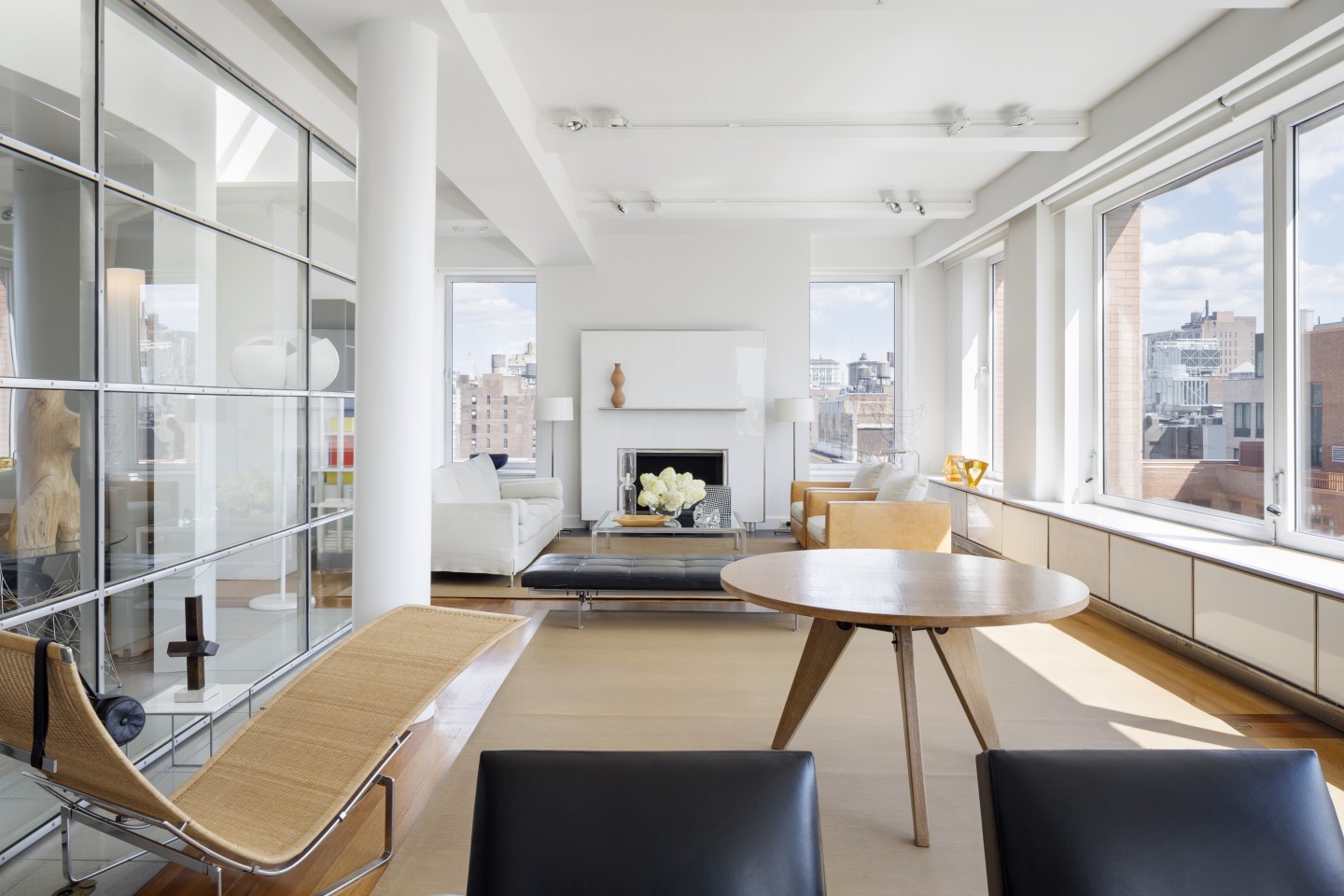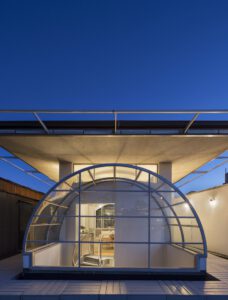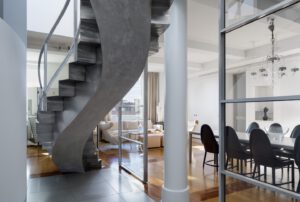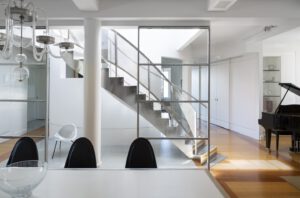FLATIRON DUPLEX LOFT
Problem:
In a 42-foot by an 85-foot top floor of a former manufacturing building, design a space and rooftop structure exploiting the potential 4 façade exposure and roof access. Integrate the city, the architecture, and the interior design and incorporate a collection of furniture and decorative arts by 20th-century artists and architects.
Solution:
On the edge of Manhattan’s Flatiron and Chelsea districts, this 12th floor and rooftop space offered the potential of four exposures. Large-scale fenestration was cut into all four facades as well as the foot to incorporate vistas from the Hudson to the East Rivers and from the Statue of Liberty to the Empire State Building.
The presence of this building’s water tank as well as those throughout the city’s landscape inspired the form that generates the division of spaces, yet permits views and layers of transparency throughout. A carefully crafted object derived from pure geometry sculpts and differentiates the public area, offers exposure to the sky plane above, access to the roof, and acts as an entry and gallery space.
The pure geometric forms are comprised of a rotunda and glass cage rising through the ceiling. The curved glass vault frees the rotunda as it comes through the roof. Punches in the rotunda reveal the shape of the double helix stainless steel and concrete stair. The stair leads to a sitting room with unobstructed views north and south oriented semi-enclosed birch tree roof garden. The south gardens parapet walls are punched on the east and west façades to provided framed views from river to river. In contrast, the north view through the water tower is completely open and urban with the neighboring buildings’ water towers lit from the addition. The roof addition sitting room is part water tower, periscope, and observation tower crowned by a metal bris-soeil similar to the crown of the Statue of Liberty.
The public spaces are separated from the private spaces by an L-shaped service bar with two layers of floor to ceiling sliding panels. Many combinations of the panels in open-closed positions layer the space. The service bar contains all bathrooms, storage areas, washer/dryer, and kitchen. In addition to its operable panels its further delineated by the aggregate quartz concrete floor.
The structural beam and concrete bay system in the public and private areas is expressed in the ceiling and reflected in the oak and cherry wood floor. A natural palate of plaster, stainless steel, wood, white structural glass and the custom designed furniture, upholstery, lighting, rugs and rubberized latex mats have a dialog with a rare collection of furniture and objects by 20th-century architects, ceramists, sculptors, and artists.
The city, architecture, and interior synthesize in a seamlessly integrated environment.
